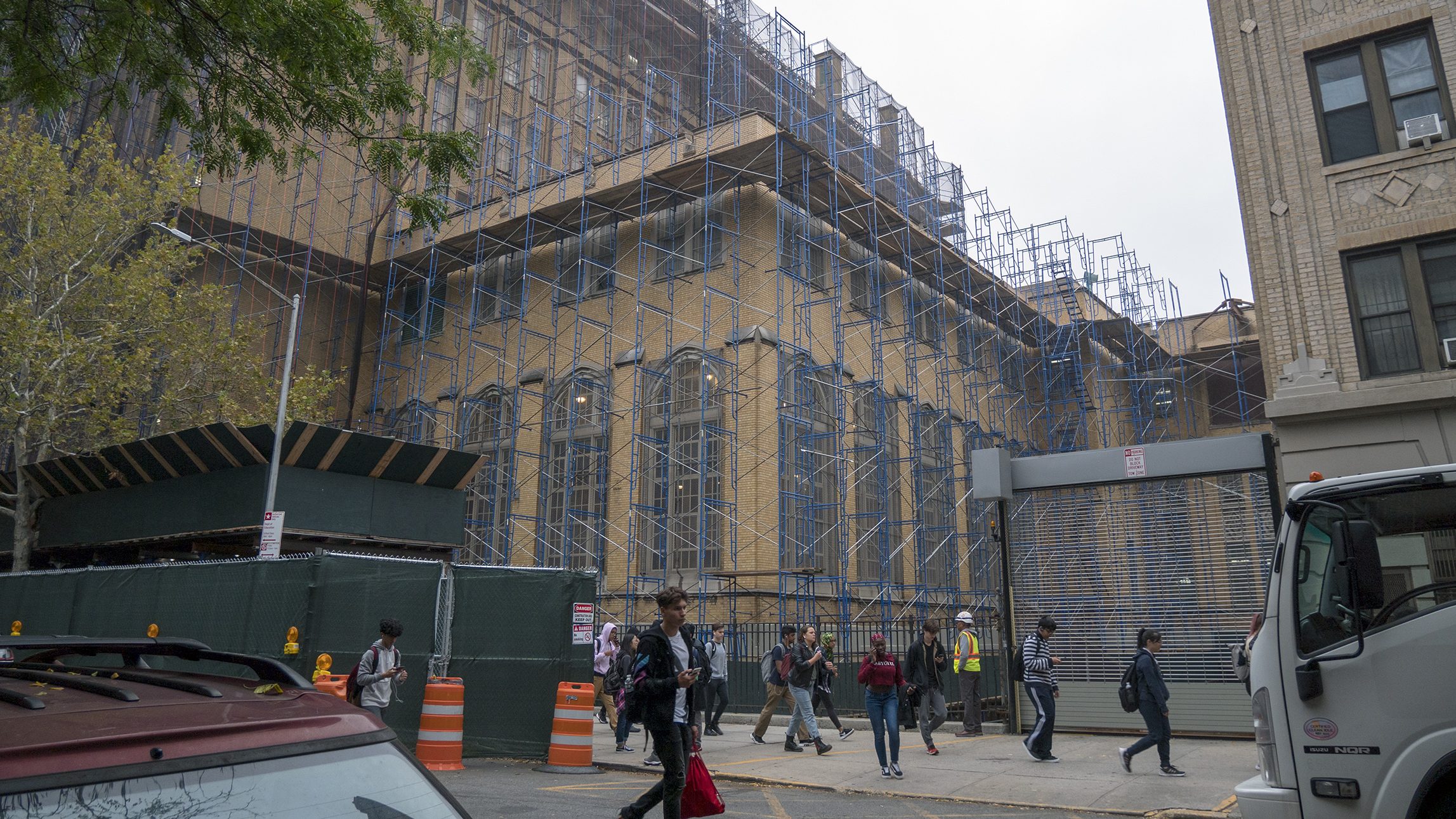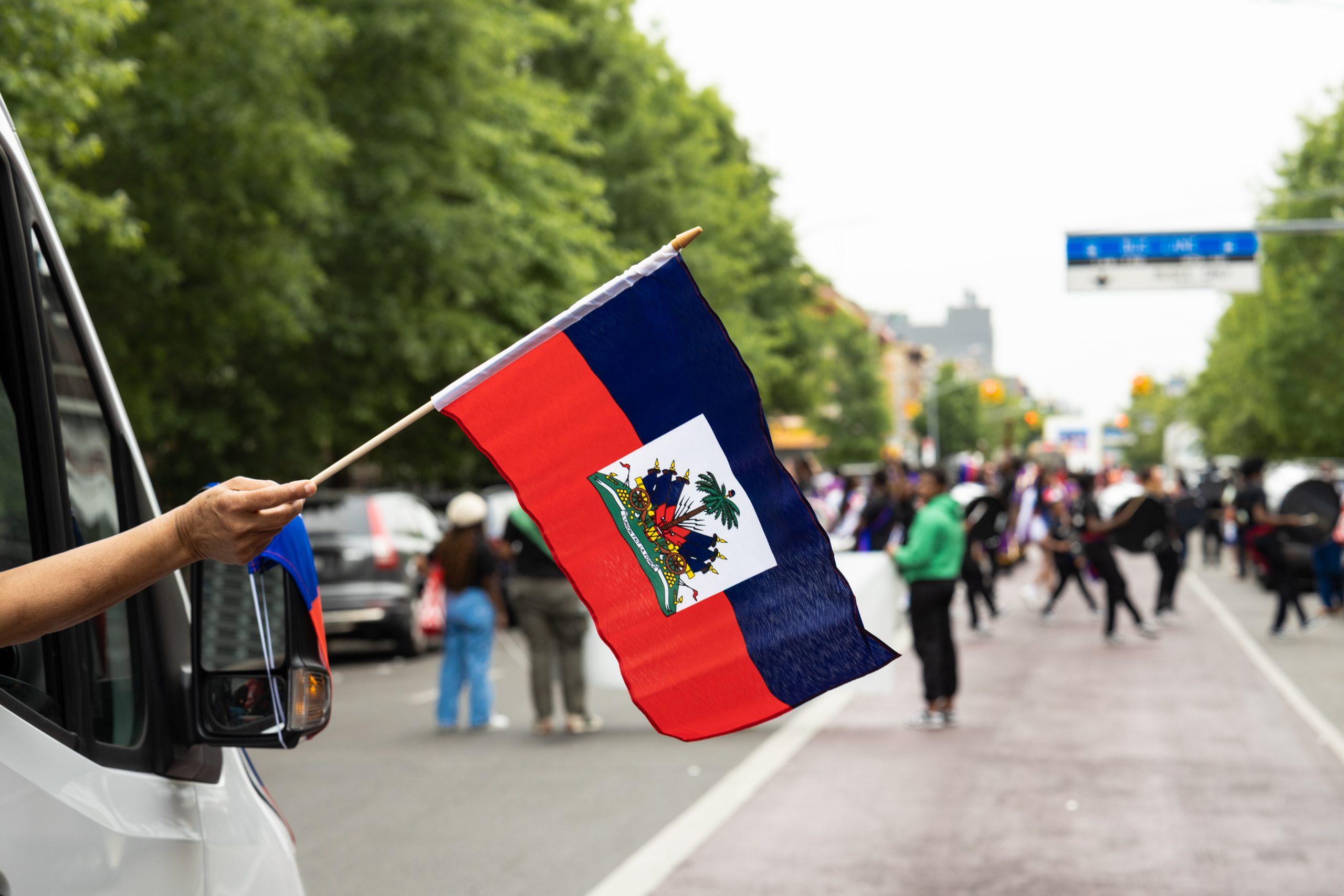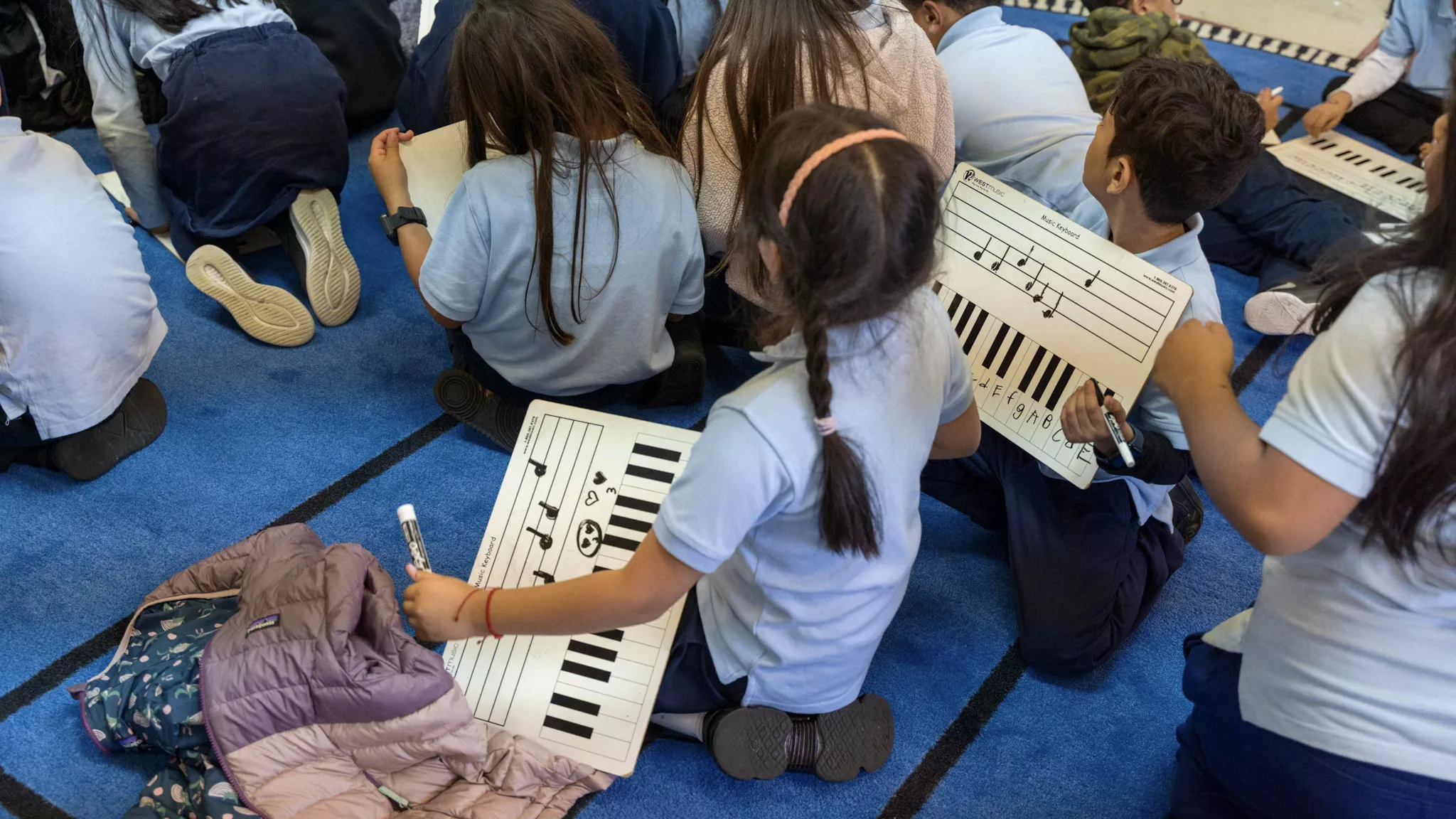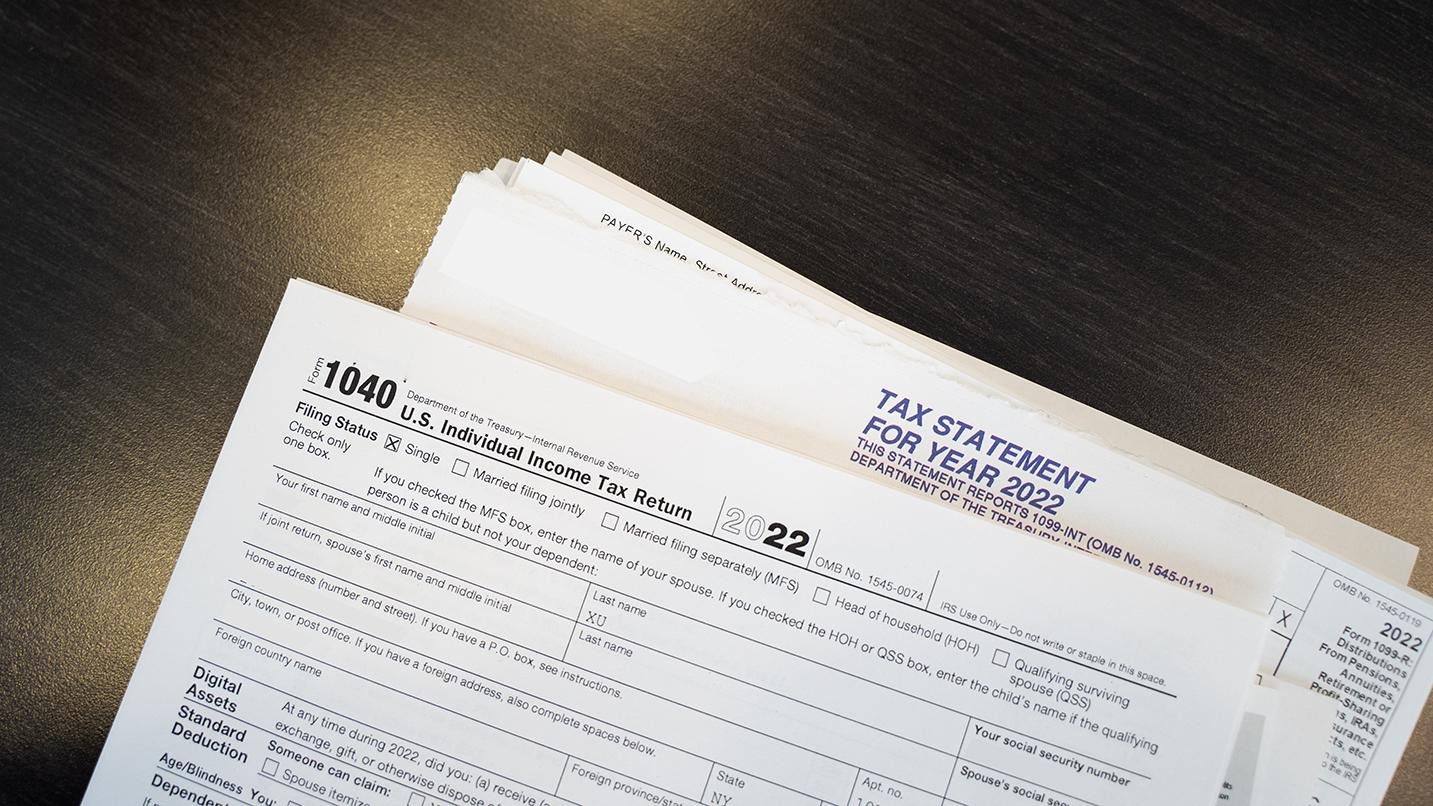This story was also published with the Asian American Writers’ Workshop.
At Sam’s school, everyone, it seemed, was abuzz in June 2018.
Mayor Bill de Blasio had just announced a proposal that would drastically alter the makeup of the student bodies of eight of the most exclusive public schools in the City. Some of her classmates thought that de Blasio’s plan came with good intent, some thought it was deeply flawed. But Sam kept her thoughts about the matter to herself.
It was the fear of backlash that kept her silent.
As a Chinese American student, Sam (which is not her real name), falls within the Asian American majority at the city’s eight specialized high schools that rely on one standardized test, the Specialized High School Admissions Test (SHSAT), as the single determining factor for admissions. (The ninth specialized high school, Fiorello H. LaGuardia High School of Music & Art and Performing Arts, does not use the exam in its admissions process.)
It was this Asian American majority, paired with high white enrollment, that Mayor Bill de Blasio targeted (perhaps unwittingly) with his now-embattled proposal to increase diversity.
“A lot of people are opposed to [the changes proposed by de Blasio] because that’s how they got in. They don’t see why it has to change. I think it does,” Sam, 16, said, but she doesn’t feel like she can speak up publicly. “A lot of people don’t care at all about diversity.”
Over the past year, local and national media, from mainstream publications to education-focused outlets, reported breathlessly about the Asian American backlash to de Blasio’s planned reforms, which would require passage through the state legislature to take effect. With 1.1 million students, New York City’s school system is the largest in the United States — and, by some accounts, the largest in the world. What happens here could impact schools nationwide, and the intense interest of Asian American communities, in particular, has echoes of the controversial Harvard affirmative action case.

The mathematical fact is that at these eight prestigious high schools, heralded as the pinnacle of New York City’s sprawling public education system, Asian students, as well as whites, are overrepresented.
While students of Asian background make up 15 percent of public school enrollment citywide, they make up 60 percent of the student bodies at the eight specialized high schools, according to 2017-18 statistics reported by the New York City Independent Budget Office.
At Stuyvesant High School, The Bronx High School of Science and Brooklyn Technical High School, the three oldest specialized high schools, which, some say, are the most prestigious, Asians make up 73 percent, 64 percent and 61 percent of all students, respectively, according to 2018 data. Meanwhile, Stuyvesant made headlines this spring when it offered admission to only seven black students in a class of 895 — it’s an extreme example, but it’s indicative of the precipitously low black and Latinx enrollment at the exclusive schools.
To drastically transform these schools’ skewed, heavily Asian and white demographics, de Blasio proposed phasing out the use of the SHSAT as the single admissions criterion over several years. Eventually, middle school class rank and statewide tests, which are wholly separate from the SHSAT, would determine admissions, opening up 90 to 95 percent of SHS seats to the top 7 percent of students from each of the city’s middle schools. The complex plan, referred to casually as “the 7 percent plan,” is detailed in full here.
It’s worth noting that in the splashy, June 2018 op-ed where de Blasio first announced his proposal, the terms “Asian” or “Asian American” are conspicuously absent.
Sam, who attends one of the three oldest specialized schools, spoke on the condition of anonymity because she feared the backlash she would receive for speaking openly in favor of admissions reform from her fellow students and her mother, who fiercely opposes phasing out the SHSAT. Sam was one of about 15 people Documented spoke to over the course of the winter and spring of 2019 in an effort to capture the human side of this educational debate that has roiled the city’s Asian American community.
‘They completely silence dissent’
“I HAVE A DREAM”
“KEEP SHSAT”
“END RACISM”
“KEEP SHSAT”
“SUPPORT DIVERSITY”
Some of these messages seem diametrically opposed, but they’re all slogans that pro-SHSAT demonstrators held aloft on signs at multiple rallies that took place over the past year.
Sam said her mother attended two of these rallies.
“She wanted me to come, too,” Sam said in an interview at the office of the Coalition for Asian American Families and Children (CACF), a nonprofit, pan-Asian children’s advocacy organization that represents more than 50 Asian-led or Asian-serving organizations, in the Financial District of Manhattan. CACF arranged the interview with Sam, a member of their Asian American Student Advocacy Project (ASAP) youth group, since she did not wish to have her mother present.
“I knew why she was going, and she was passionate about it, but it didn’t feel right for me. I didn’t want to be seen supporting that idea,” Sam said, because she didn’t want to associate herself with this group of people whose reasons seemed to her, at the core, racist and selfish.
While Sam agrees with de Blasio’s objective of diversifying specialized high schools like hers, she said that “the way that he’s doing it isn’t right.” It’s a common refrain amongst the Asian Americans and Pacific Islanders (AAPIs) Documented spoke to. They lambasted the mayor for his lack of civic engagement in their communities before he announced his plan, which would certainly reduce AAPI enrollment at the specialized schools.
CACF, for its part, wrote the following in a statement:
“The Mayor’s plan for reform, as many educational policy-level decisions continue to do, leaves out the voices and input of the APA [ed: Asian Pacific American] community — a diverse community that largely cares about school reform and issues of equity and inclusion in education. Further, through the release of the proposed changes and the ensuing media coverage, marginalized communities and communities of color have been pitted against each other, regardless of the intent.”
As CACF has surveyed specialized high school alumni, Vanessa Leung, the group’s co-executive director, explained why some graduates who emerged from this high-stress crucible of education balk at the idea of changing admissions.
“We’ve seen how being able to get into specialized high schools is, in some ways, a badge of honor that people take to a point where it’s almost, ‘We had to go through that, so why change it?’” Leung said.
Several alumni of specialized high schools mentioned the vitriol that they faced when they voiced their support for admissions reform, especially in online communities.
“There’s been a lot of really nasty name-calling in the Brooklyn Tech alumni association Facebook group,” said Jason Wu, 33, a 2003 alumnus of the school who now works as an attorney with the Legal Aid Society in Harlem. Wu, with eight other specialized high school alumni, co-authored a July 2018 op-ed in Crain’s New York with the headline “Asian Americans should embrace reform of specialized high school admissions.” At the time, Wu and his co-authors were some of the few Asian American voices speaking up in favor of reform. “Once it came out, I posted it on the Brooklyn Tech alumni Facebook group, and people were calling me ‘stupid,’ ‘idiot,’ saying ‘how did I even get into Brooklyn Tech.’ They completely silence dissent.”

Ron Rapatalo, an outspoken, pro-reform 1993 alumnus of Stuyvesant, spoke of similar exchanges in his school’s online alumni communities. “There is a very strong belief that the SHSAT is a meritocracy and that the test is purely objective,” he said. “Pushing back against that sentiment gets comments like ‘those students’ [i.e. black and Latinx] need to study harder or do more test prep or that they aren’t smart enough.”
Those who do dare to speak out about racism and how it has been at play in the creation and history of standardized tests, Rapatalo said, get “shut down.”
Wu, in particular, took issue with the media narrative around the specialized high schools, calling the op-ed he co-authored “an outlier piece.” Mainstream media, he said, “refused to interview easily accessible people” from the Asian American community who were in favor of admissions reform. “It’s good that we put our message out there [in the Crain’s New York piece],” Wu said, “but it only gets a certain amount of attention, and then the dominant narrative reasserts itself.”
Rapatalo, 44, who is Filipino American, said that he felt the media had painted the city’s diverse Asian American communities with a single, broad brush. “Chinese Americans alone are not a monolith,” he said. “But [based on the media coverage] it’s as if all the Chinese Americans who are fighting for the test represent all Chinese Americans in New York City.”
In November of 2018, CACF produced a report titled “Overemphasizing a Test, Oversimplifying Our Children: An APA Perspective on Specialized High School Reform toward Educational Equity,” which presented its arguments for eliminating the use of any single test to determine admissions, as well as numerous alumni voices speaking out against the culture of high-stakes testing.
Leung said part of why CACF produced the report was because of the one-sided nature of media coverage of Asian American families’ responses. “We started talking to many of the alums and connected to additional folks who thought their perspective was not included in the overall dialogue that was being portrayed as the sole Asian American perspective on this issue.”
The report caused some backlash, she said. “What we were hearing was that we were traitors to our community. We were told, ‘You’re supporting a process that is anti-Asian.’” Because de Blasio’s plan would lower AAPI enrollment at specialized high schools, some critics have labeled it “anti-Asian.”
Leung rejected that characterization of her group’s work, though. “At CACF, what we see is that we actually need to come together to be a voice for those who are most marginalized in the Asian American community. We know that there are segments within our community who do not have access to the specialized high schools,” she said.
In fact, 82 percent of APA students across the city do not attend a specialized high school, according to a 2008 study called “School Choice and Segregation by Race, Class, and Achievement” that CACF cited in its report.
Leung also said that her group had been in touch with their counterparts in black and Latinx communities and, by comparing notes, learned that the governor’s office had chosen to hold separate meetings with these groups on the SHSAT issue in 2018. “It was like, ‘Oh, you guys in the Latinx groups had a meeting? We had a meeting, too!’ They separated us,” Leung recalled. “It became clear to us that these things were happening,” when she believed the best course was to bring communities of color together for open dialogue.
The need for student voices
Through 2018 and much of 2019, the voices that dominated the conversation around the SHSAT were parents and advocates. Lesser heard were the students whose lives would be impacted by education policy, thought teenage activists Ayana Smith and Sophie Mode.
Both are members of Teens Take Charge, a student-led program within The Bell, a nonprofit that shares students’ voices on educational issues, which took a hard look at the media coverage around the reforms. “Student voices missing in coverage of NYC specialized schools debate,” the headline read on a blog post in which Ayana, 17, and Sophie, 16, analyzed sources in two media outlets, The New York Times and Chalkbeat, that covered the issue extensively.
“The perspectives of black and [Latinx] students, parents, and educators are essential in understanding the complexity of this issue,” Ayana and Sophie wrote. “These groups feel the impact of the city’s segregated school system more than any others. To be complete, coverage of the specialized high schools debate and other issues related to race and equity needs their views.”

When I met Ayana in February, she was in her senior year in high school at a screened public high school in the Bronx, the borough where she lives.
“I worked my butt off in middle school, and one test defined it,” she said of her experience taking the SHSAT as an eighth grader. As an academically promising middle school student, Ayana, who is black, was selected for the free DREAM test-prep program funded by the city’s Department of Education. “It wasn’t that helpful,” she said. “They gave us a textbook and said, ‘Oh, go study. You have six months,’ when, in fact, it takes about a year to prepare for the SHSAT.”
“Although I was doing my best to prepare for the test, just having an environment that wasn’t pushing me to prepare for the test, I felt, was really a drawback,” she said, remaining impressively composed and grounded as she described her middle school as a dangerous setting where stabbings and going on lockdown were not out of the ordinary.
“In seventh and eighth grade, we’re still learning what sixth graders are learning in affluent schools in affluent neighborhoods. A lot of the content that I was learning at DREAM wasn’t reinforced,” Ayana added.
Not all SHSAT prep programs are equal — Ayana’s experience in DREAM could not be further from that of students like Sam, whose parents paid for privately run courses. Yet among Asian American anti-reform advocates, the claim that the availability of the free DREAM program is proof that students who take the SHSAT start from “a level playing field,” is constant.
Some who were willing to acknowledge the disparity in SHSAT prep programs resorted to racist tropes as they pointed out that there are poor Asian families that scrimp and pinch to send their kids to private lessons, and that black and brown families could do the same for their kids if they cared more.
“I think these immigrant parents just don’t understand things like generational poverty. They don’t understand the school-to-prison pipeline,” filmmaker Curtis Chin, who directed “Tested,” a 2015 documentary focused on the SHSAT, said in an interview. “Asian Americans do benefit from certain stereotypes that give them opportunities and give them confidence” when it comes to standardized testing.
Ayana, Sophie and other members of Teens Take Charge have traveled the city speaking at community meetings and events centered on education policy. While some adult audiences have listened attentively and applauded the students for their courage, some have responded angrily.
Teens Take Charge’s adult facilitator, Taylor McGraw, recounted one meeting in late 2018 during which a small group of adults, who were Asian, yelled at Ayana and interrupted her. “They’ve heard some really nasty things,” McGraw said.
In interviews, Ayana chose not to mention the community pushback. “They, on some level, realize that these parents are angry because they care about their kids,” McGraw explained. “They want their kids to have a great education, and [the Teens Take Charge members] can relate to that.” Since then, McGraw added recently, as the tide of the debate has turned, he believes the students’ feelings may have changed over time.
Sophie, Ayana’s co-author, who identifies as white and Jewish, summed up the anti-reform parents’ argument by saying, “It’s about ‘what my child needs,’ not about what’s best for the whole school system. It’s like, your child already has so much privilege, and we need to do something about that.”
‘We have some housekeeping to do in our community’
At this point, more than a year after de Blasio announced his proposal, the bill that would put his plan into action has failed to pass through the state legislature. The city faces a lawsuit against the admissions changes, mounted by certain Asian American factions, as well as an amply funded opposition campaign. Last month, de Blasio reportedly told a group of journalists that “our plan didn’t work” and that he would “start over — listen to everyone, and listen for something that will get us progress.” Meanwhile, as reported by Chalkbeat, the state assemblyman who sponsored the stymied bill in the last legislative session said he would take a different approach rather than resubmitting the bill. So it’s back to the drawing board for this ambitious, yet highly contested plan, with no progress yet to show. If anything, this controversy has succeeded only in stirring up a great deal of ugliness and division among New York City’s communities of color.
“The top white kids in New York City [academically and socioeconomically] have already been pulled out of the system” into private schools, Chin, the filmmaker, said.
As Wu, the Brooklyn Tech alum and Legal Aid attorney put it, “White families don’t have to fight for the scraps” of public education the way communities of color do — as communities of color represent the vast majority of the students in the city’s public schools. In early 2019, Wu also wrote an op-ed for Chalkbeat on the aforementioned lawsuit, cautioning fellow Asian Americans from allowing our struggles to be “distorted and weaponized … for ulterior purposes.”
In June, CACF released a statement that it called an “open plea” to New Yorkers, condemning the taunts, insults and even doxxing of students and parents who have spoken out on specialized high school admissions. The divide, CACF’s statement said, stemmed from the myth of Asians as the “model minority”:
“Many in this debate fail to recognize the structural racism that has shaped our public education system, and that is rooted in anti-blackness. But many also fail to understand histories of APA communities and the multiple struggles that APA families and children face in an education system that overlooks our communities’ needs and renders our APA youth invisible.”
“There’s a false position that our self-interest is in opposition to other communities of color,” Wu said, criticizing those whom, he believes, care only about advancing the interests of Asian Americans.
“Let’s talk about the fact that we have some housekeeping to do in our community,” said Rapatalo, the pro-reform Stuyvesant alum, who now works in education recruiting. “I hear this argument from other Asian Americans of ‘why are we not getting our due?’ I understand this, but the anger is misplaced at best, and the origins are from not caring about black or brown people.”
Rapatalo, who grew up in a predominantly Caribbean neighborhood in East Flatbush, Brooklyn, said his roots humanized his relationships with other people of color and pushed him to stand beside black and brown communities. As the husband to his black wife and the father to his biracial daughter, he said, “I need to be able to look my daughter and other black and brown kids in the eye and say what I did for equity.”
Wu, who said he grew up in working-class communities in Brooklyn and Queens that were mostly black and Latino, said he observed the disparity in opportunities on the basis of race, income, immigration status and many more factors, but he didn’t have the language to talk about it in his youth. Now, as an attorney, he said the vast majority of his clients are black and Latino. “To address systemic racism we need systemic reforms,” he added.
As alumni of specialized high schools, both Rapatalo and Wu spoke about their experiences of learning to dismantle the myth of meritocracy.
“There’s this whole idea of ‘I got here because I’m solely talented’ and ‘Why are we being attacked for our success?’” Rapatalo said. “But we [Asian Americans] have been successful despite the structural racism. I’m not gifted and talented, I’m just good at tests, and I got disproportionate resources.”
The bigger issue
In addition to being the country’s largest public school system, New York City’s schools are also plagued by persistent segregation, a problem that stretches way beyond just the specialized high schools.
The reality is, the specialized schools are some of the very limited opportunities for New York City’s students to receive a free, quality education, and that scarcity has created a zero-sum game, where one group’s gains lead to another group’s losses, Leung said.
While the SHSAT debate has sparked unprecedented levels of civic engagement among local AAPIs, advocacy has to reach beyond just these eight specialized schools. If we really want to provide educational equity for all AAPI students, and not just the 18 percent who attend the elite eight, as well as non-AAPI students, change needs to happen across the entire school system, CACF’s report said.
It’s a statement that the students of Teens Take Charge have tried to make from the beginning, too.
“The students had a lot of grievances to air about the education,” well beyond just the specialized schools, McGraw, the group’s adult facilitator, said of his first batch of students. “They asked, ‘Why is it that in order to get the so-called good opportunities, I have to go to a majority white school? Why is it that I am reduced to a test score, and why don’t I get access to the arts and extracurriculars that more affluent kids are getting?’”
This spring, Teens Take Charge unveiled its Enrollment Equity Plan, which proposes diversifying all of the city’s high schools — not just the elite eight — so that every freshman class has a mix of high- and low-scorers on the state’s middle school exams. The purpose, the students say, is to prevent the extreme concentrations of low-performing students in small, racially and socioeconomically segregated schools, like we see today. While the state has jurisdiction over the specialized high schools, de Blasio’s city government could roll out these changes to non-specialized high schools overnight, McGraw said.
As of August 2019, a new proposal put forth by a de Blasio-appointed task force is making waves with its aim to radically desegregate the system by scrapping gifted programs at all elementary and middle schools, as well as some high schools — which doesn’t include the specialized schools. Keeping up with the educational brouhahas in this city can feel like an impossible task.
As for the specialized high schools, Sophie from Teens Take Charge pointed to how their Enrollment Equity Plan supports a version of de Blasio’s 7 percent plan, which would offer seats to students from middle schools across the city.
If de Blasio’s June 2018 plan did take effect, Chin, the filmmaker, predicted, it would change the culture of the specialized high schools. “They will not be the same schools that they have been in the past,” he surmised.
As it stands now, Rapatalo said, SHSAT supporters are holding onto a single test. “There’s this thinking that ‘I studied really hard, so other people should have to study hard, too.’ Is that what we want? That is not what I want for society and kids and families to have to do. To go to test prep mills and spend hard-earned money to take a test?”
McGraw put it this way: “I don’t know why we’re celebrating a school that’s 97 percent Asian or white as a great school. I don’t know who came up with the idea that that was the definition of a great public school, because I think that a great public school is a school that exposes children to all types of diverse ideas, backgrounds and cultures and pushes them to think critically about the world around them.”
The advocates and alumni are now questioning whether the current environment in specialized high schools really does allow young adults to thrive.
“What does thriving mean? Being cutthroat? Beating ourselves to a pulp to prove something?” Rapatalo wondered aloud. “I’m very grateful for my specialized high school education, but I’ve had to decolonize my mind from the idea that I’ve had to work myself to a pulp to prove myself.”














